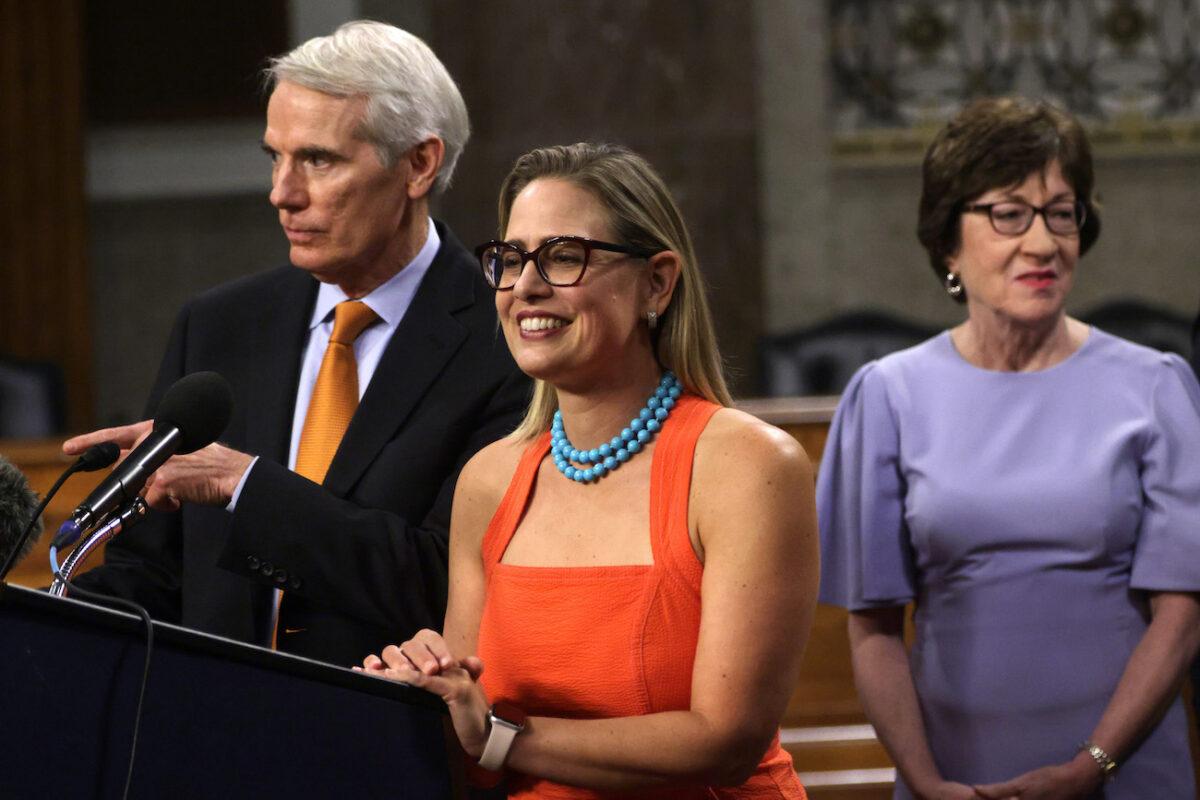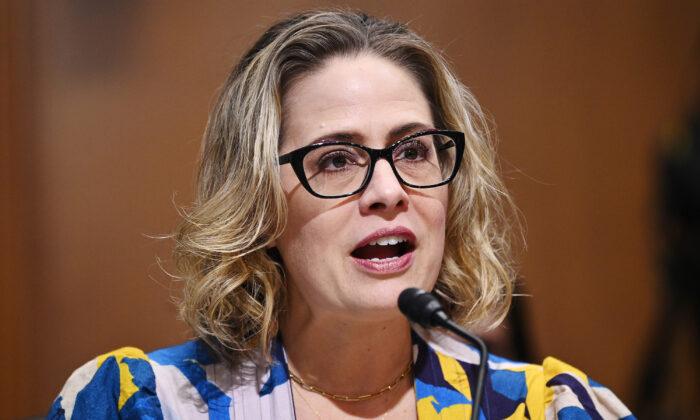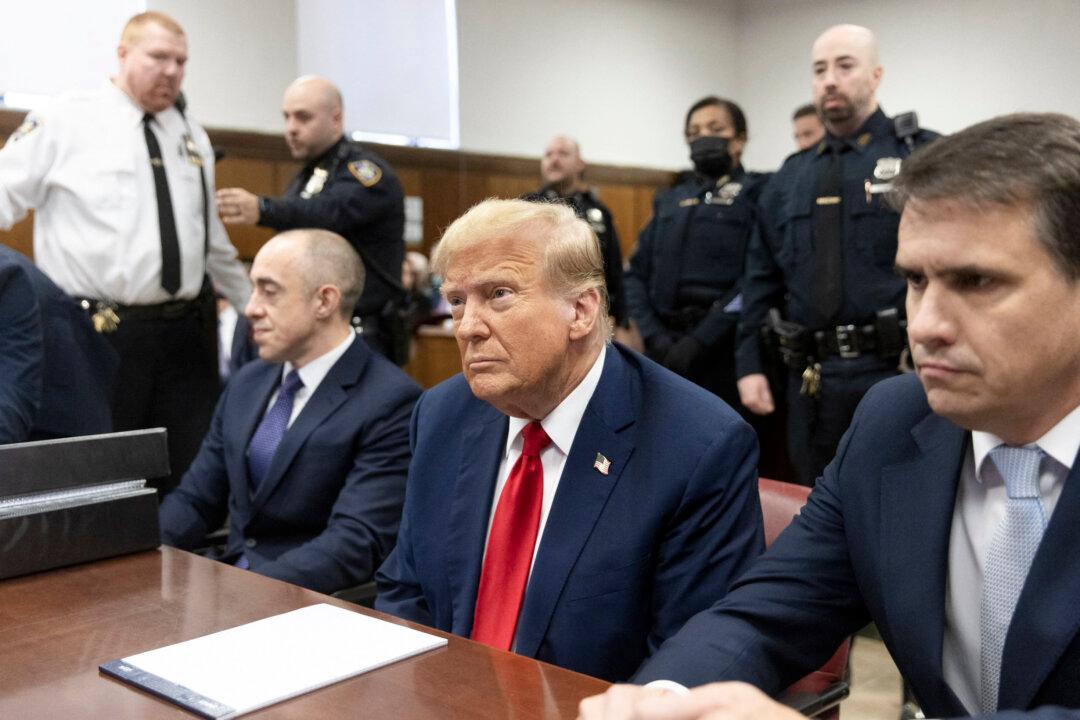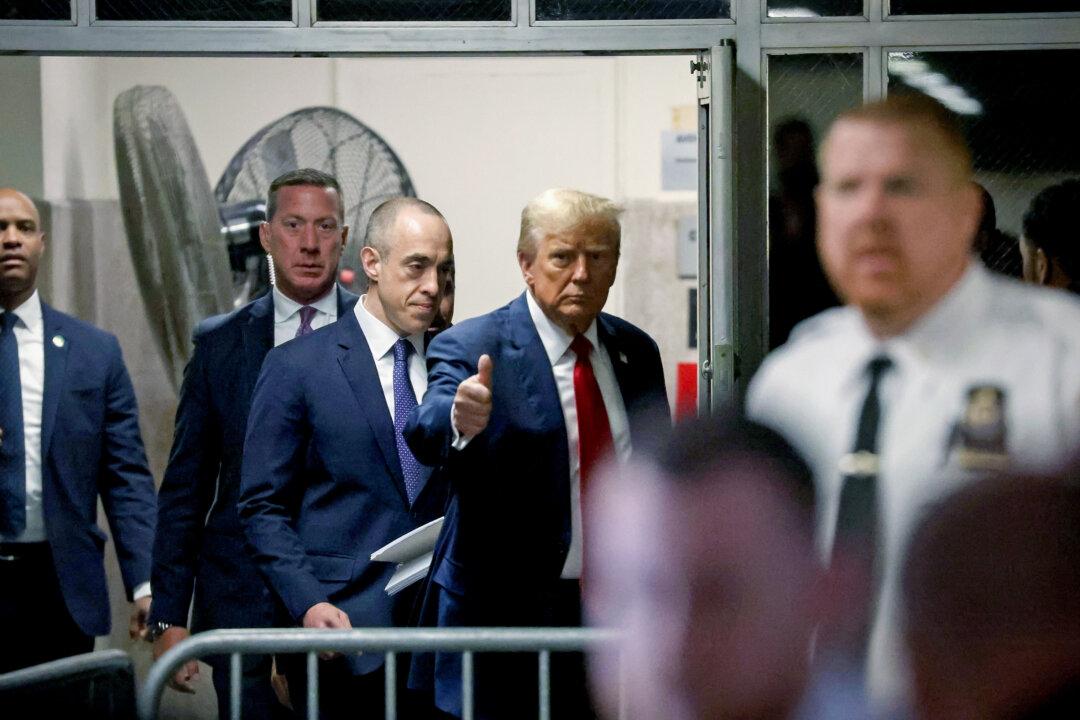Arizona Sen. Kyrsten Sinema’s announcement last week of her decision to make an official exit from the Democratic Party and register as an independent results from a number of disparate factors, including the direction of the party before, during, and since the midterm elections, and the prospects for an independent candidate in a state with a highly idiosyncratic political and demographic composition, experts on U.S. politics and elections have told The Epoch Times.
On one level, her decision to bolt is clearly a sign of the ideological hardening of the party, its increasing servility to its radical base, and its growing unwillingness to entertain bipartisan and heterodox stances, viewpoints, and policies, according to one expert.
A Senator Speaks Out
Sinema explained her decision to leave in a Dec. 9 op-ed piece in which she pointed out not just the Democrats but both major parties for criticism, describing a “disconnect” between what Americans need and expect from their elected representatives, and what the parties are offering them.“Everyday Americans are increasingly left behind by national parties’ rigid partisanship, which has hardened in recent years. Pressures in both parties pull leaders to the edges, allowing the loudest, most extreme voices to determine their respective parties’ priorities and expecting the rest of us to fall in line,” Sinema wrote.
But for all the careful wording, vagueness, and refusal to name names in her op-ed piece, one political observer interprets Sinema’s decision as a comment on the state of the Democrat Party and the treatment that politicians viewed as centrists or outliers can expect at the hands of the party faithful.
That’s the view of John Feehery, a strategist, commentator, and former press secretary of Rep. Dennis Hastert (R.-Ill.), who speculated that Sinema grew to dislike attending meetings of members of the party because of the hostility she faced.

Sinema’s announcement last week can be viewed as a microcosm of a tendency that has been on display before, when dissatisfaction with the performance of the Democrats instigated shifts not only on the part of individual politicians but within broad swaths of the electorate, Feehery suggested.
“This happens on occasion, though I’m more familiar with it in the House of Representatives, where we had members who switched parties in the aftermath of the 1994 and 1998 midterms. A lot of Democrats became Republicans, and that was indicative of a shift in the country, as a lot of people in the South decided they had officially been Democrats for a long time but were really voting Republican. It’s usually a reflection of where the country is,” Feehery said.
Such phenomena are indicative of broad political trends, although there are instances where people who reject a bulk of their own party’s views and stances for one reason or another do not summon the will to leave, he noted.
“There are some ‘Never Trump’ Republicans, who mouth all the talking points of the Democrat Party, people like Rep. Liz Cheney (R.-Wyo.) and former Rep. Denver Riggleman (R-Va.). Whatever Democrats want, they do, but they still classify themselves as Republicans, which I think is hilarious,” Feehery said.
Official Ostracism
Sinema may have felt considerable exasperation with other Democrats given the decision of the Arizona Democrat Party’s executive board to censure Sinema formally in January for her opposition to doing away with the filibuster. Others in the Arizona branch of the party viewed her stance, like that of her Democrat colleague, West Virginia Sen. Joe Manchin, as not only a betrayal of her party but as a blow to the long-running struggle for voting rights.“I don’t think she enjoyed going to the Democrats’ meetings because they kept beating her up. They’re not going to beat her up as much now, because they’re not going to be able to use the threat of a primary election to get her to fall in line. In fact, the more independent she is, the better off she will be in a general election in Arizona,” Feehery said.
Sinema’s decision to register as an independent, rather than cross the aisle and join the GOP, is unsurprising given the difficulties of successfully setting up shop within a party you used to oppose, he believes.
The Case of Arizona
The ideological hardening of the party and its tendency to punish internal dissent may not single-handedly explain Sinema’s decision, and when a politician makes such a move, his or her self-interest should not be ruled out completely. This is particularly true in the complex social and political landscape of Arizona, observers believe.“I assume that politicians are rational, and they respond to their environments to further their own goals. There is a good possibility that many party-switchers, or those who leave a party to become independent, do so to increase their electoral prospects. Strom Thurmond (R-S.C.), Richard Shelby (R-Ala.), and Ben Nighthorse (R-Colo.) were all sitting members of Congress when they switched parties and went on to win more elections afterward,” Mark C. Smith, chair of the department of political science, history, and government at Cedarville University in Ohio, told The Epoch Times.
“They also represented states that were trending, at least at that moment, toward the other side, so switching parties was beneficial,” Smith added.
Sinema may have studied the political environment and electoral trends in Arizona and come to the conclusion that, as long as she stayed in the Democrat camp, her prospects of surviving a primary challenge were dim, Smith speculated. But as an independent in a three-way race, she might be able to gain the support of enough moderate voters to win a primary as well as a general election.
“Arizona is a fairly moderate state, and it has a history of unconventional candidates, so this could be a good gamble. If this is the goal, I am sure she has polling to suggest this is possible,” Smith said.
But even with the foregoing analysis, Smith does not discount the possibility that Sinema just found the Democrat Party too inhospitable in its current guise and had no choice but to bolt.
“There is also a reasonable chance that sitting politicians indeed grow out of step with their current parties, and as they evolve, or as their parties change around them, the relationship becomes harder to justify. I think this could be part of what happened with Sen. Sinema,” he said.
The Electoral Divide
In the view of Richard Conley, a professor of political science at the University of Florida, Sinema may indeed have made calculations based partly on the political complexion of Arizona and, especially, with an awareness of a growing urban-rural split in the state that makes it fertile ground for the candidacies of independents cleaving a middle path.“My own view is that there’s an urban-rural divide, and on some level, I think that Sinema hopes that in 2024 the Democrats will run a far-left candidate in the Beto O’Rourke mold in Arizona. If the Democrats run somebody like that, it probably won’t resonate with more than 15-20 percent of the population, in Phoenix. Then if the Republicans put up a bad front candidate, like Herschel Walker, she runs up the middle,” Conley said.
“I think that’s what Sinema is strategically thinking about, because the Democrats probably will nominate someone pretty far left, whereas Donald Trump, at one point, had the Midas touch but now seems to have the reverse” effect on candidates, he added.
At the same time, Conley does not discount the role of ideological purism and intolerance on the progressive side as factors driving Sinema’s flight.
“I think there is something to the view that it’s ideological purity. It’s been funny, for me, to watch Bernie Sanders come out and bash her for holding things up, because he’s not even a Democrat himself. You would think he would support her independence, but he doesn’t,” Conley said.
The Epoch Times has reached out to the Arizona Democrats and the DNC for comment.





